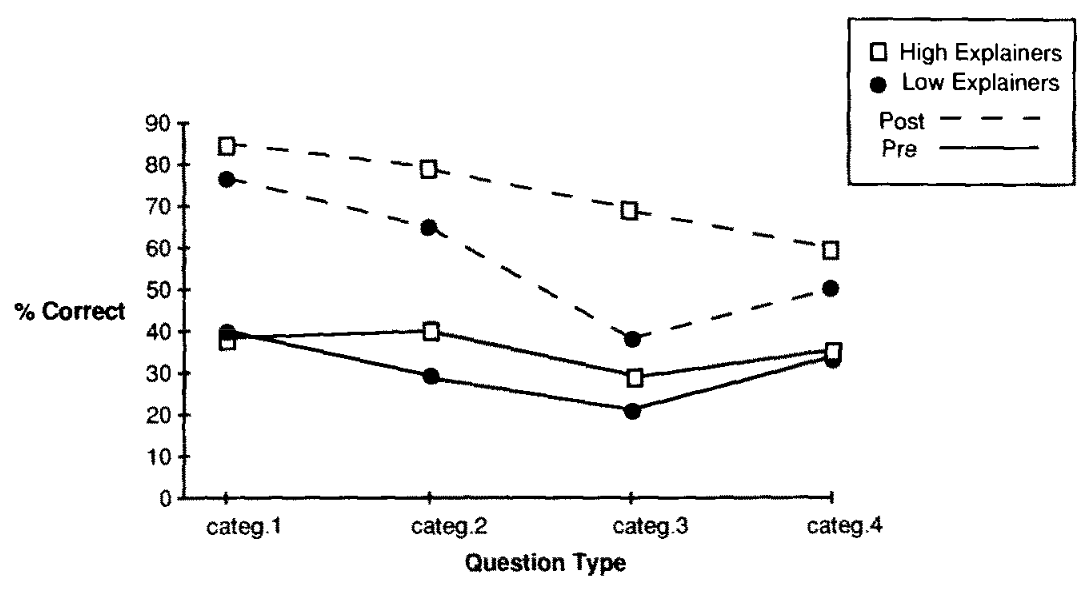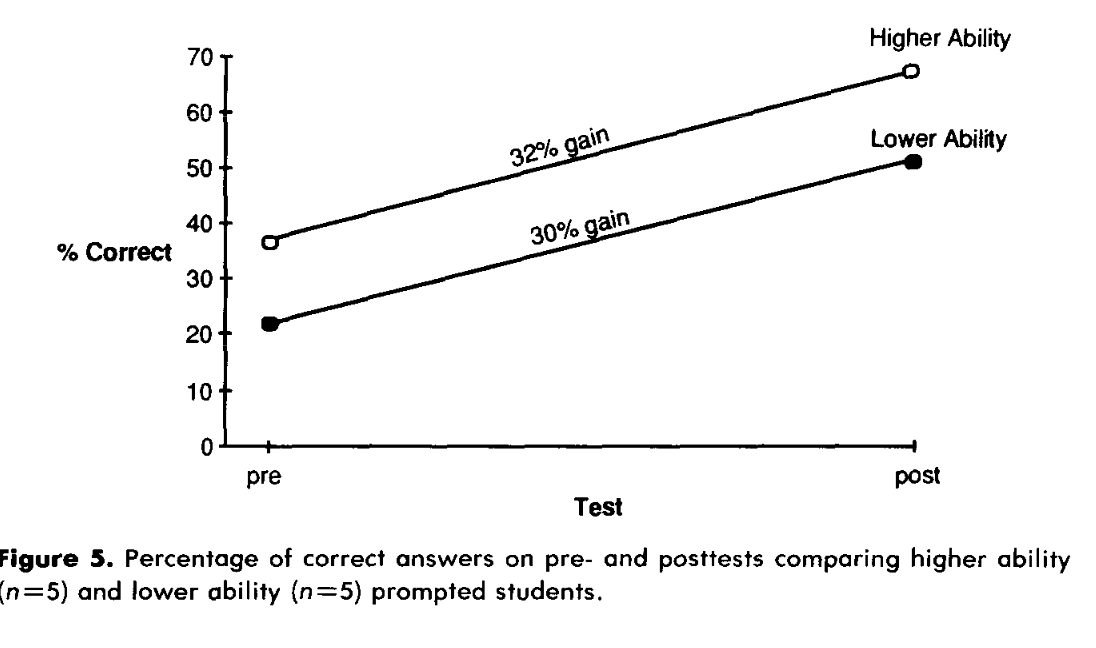Andyʼs working notes
About these notesChi, M. T. H., De Leeuw, N., Chiu, M.-H., & Lavancher, C. (1994). Eliciting self-explanations improves understanding. Cognitive Science, 18(3), 439–477
First experimental intervention demonstrating Self-explanation effect: prompting students to generate Self-explanation while reading conceptual material causes improved performance on both recall and Transfer learning tasks. Unlike Chi, M. T. H., Bassok, M., Lewis, M. W., Reimann, P., & Glaser, R. (1989). Self-explanations: How students study and use examples in learning to solve problems. Cognitive Science, 13(2), 145–182, this was a controlled experiment; one group of students was prompted to self-explain after every sentence, and one was not. Instead, the latter group read the text twice, to hold study time constant.
As in the 1989 paper, the central framing is:
- sometimes you can understand information (like a story) by directly mapping it onto existing knowledge
- sometimes you can directly encode new knowledge (like rote instructions)
- but often knowledge acquisition requires “integration of new information with existing knowledge”, as well as inference
They propose that one important reason why self-explanation helps is that it’s a process of constructive inference. Often key ideas and relationships are left implicit in the text; the reader is meant to infer them. See e.g. the dashed elements here:
Likewise, these concepts are part of larger “processes”, and the details of those relationships must often be partially inferred. The solution isn’t just to make everything explicit in the text. That would be tedious and exhausting.
Prompted students learned much more from their study session:
As the authors point out, this understates the effect’s potential: the unprompted students read the passage twice; they probably did some covert self-explanation; the prompted students were merely asked to self-explain, without any training or further advice.
As in the ’89 paper, the prompted students were starkly stratified into “high” and “low” explainers, which generated 87 and 29 inferences respectively. The high explainers performed no better initially but gained more from the intervention.
- High explainers rarely referred to the text on post-test questions, suggesting that they’d internalized more of the material.
- Their explanations integrated between topics (rather than just within topics) much more regularly.
- Groups were equal able to explain the function of components which were explicitly described in the text, but high explainers performed much better when function was only implied.
- High explainers were much more likely to end up with the highest-graded mental model of the topic.
Where does the high/low-explainer trait come from? Interestingly, it’s not the same as high/low-knowledge. When prompted students were striated by knowledge level, the groups had the same gains.
The authors suggest two possible explanations of the high/low-explainer trait:
- differences in general knowledge: students in the two groups had the same pre-test performance, but maybe the high-explainers had more general science background, so they could integrate new information more easily
- cross-topic encoding strategy knowledge: high-explainers have previously picked up the general strategy of making connections across topics
The authors suggest three mechanistic reasons why self-explanation helps learning so much:
- It’s constructive: it induces students to infer knowledge which wasn’t directly provided.
- It’s integrative: it “encourages the integration of newly learned materials with existing knowledge.
- It’s error-correcting: it creates ongoing opportunities for students to notice and correct conflicts between their interpretations and the text.
Q. High-level findings?
A. Students prompted to self-explain while reading perform much better on recall and transfer tasks than students who re-study. Of the former, those who generate more explanations benefit much more.
Q. Difference between high vs. low explainers in their use of the text during testing?
A. High-explainers rarely referred to it; low-explainers often did.
Q. Difference between high vs. low explainers in terms of integration scope?
A. High-explainers integrated across topics much more often, rather than just within topics.
Q. High vs. low explainer difference w.r.t. ability to induce function of components?
A. Same performance when function was explicitly described; high-explainers performed much better when implicitly described.
Q. Two suggested explanations for high/low-explainer trait?
A. differences in general knowledge (i.e. supporting integration); knowledge of cross-topic encoding strategy
Q. Three mechanistic reasons suggested for why self-explanation helps so much?
A. it’s constructive (students infer what wasn’t said), integrative (encourages connections with prior knowledge), and error-correcting (helps students notice and correct wrong interpretations)